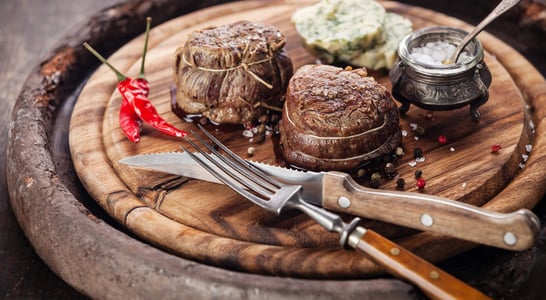
National Prosecco Day
Bubbly white wine that doesn’t break the bank! Host a party with plenty of prosecco, a popular drink with ancient roots grown in a region of Italy.
Enjoy the delight of a light and bubbly drink when celebrating Prosecco Day! Prosecco is a sparkling white wine that has become increasingly popular over recent years as more and more people discover its delicious taste and affordable price.
History of Prosecco Day
Although this wine was practically unknown beyond Italy’s borders before the beginning of the 21st century, it actually has been around for many years. Prosecco comes with a longer history than most people outside of Italy are aware of. In fact, its origins likely date back at least 2000 years, to 200 BC when the Romans first referred to this regional white wine as “Puccino”.
Made from grapes grown in the vineyards of the Prosecco region in northeastern Italy, this wine is similar to Champagne in that it must be grown in that particular region in order to be labeled with the name Prosecco. This region of Italy, with its largest city Trieste, lies on the border of Slovenia.
The Prosecco wines are usually made in the Spumante fashion, which is a sparkling wine, or as a Frizzante, which is a semi-sparkling product. The most popular version of this wine is the Prosecco DOC Spumante which has long-lasting bubbles.
About 5 percent of Prosecco wines are made in the Tranquillo fashion, without any bubbles at all, but these versions are rarely exported and are usually only found within Italy.
Prosecco is similar to Champagne in that it is a white wine that is usually bubbly and has a light taste. However, the processes to make each of these wines are a bit different, rendering Prosecco a bit more affordable than its French counterpart, Champagne.
While Champagne is allowed to go through the secondary fermentation process individually in each bottle, in contrast, Prosecco’s secondary fermentation takes place in a large, stainless steel vat before it is bottled. Because of this difference, the production time is shorter–as little as 30 days or up to 9 months for a higher-end product.
It is likely the affordability of Prosecco that has brought about its popularity in the past couple of decades, as the prices of Champagne often prohibit many people from enjoying it on a regular basis. Prosecco, on the other hand, offers much of the delight and joy of a bubbly, white wine, but without that prohibitive price tag.
The grape that this white wine comes from was originally called the Prosecco grape, but it was renamed within the EU in 2009 to become the Glera grape. In recent years, Glera grapes have been cultivated in many places other than this northeastern region of Italy, including Brazil, Argentina, Romania, and Australia.
It is important to note, however, that even though it cannot actually be called “Prosecco” if it is grown in one of these other countries, the processes and resulting product may create very similar results that can be enjoyed in a similar fashion.
Now it’s time to learn how to celebrate all of the delight that is involved with Prosecco Day!
National Prosecco Day Timeline
200 BC
Prosecco is first called “Puccino”
It is likely that the Romans are first enjoying their own versions of Prosecco at this time, referring to it as “Puccino.” Its origins are likely the vineyards of a village called “Prosecco” near Trieste, Italy, which shares a border with Slovenia.[1]
1754
First documentation of the name “Prosecco”
Written into a poem by Aureliano Acanti, the modern name of this wine comes about. It is likely named for the village where the grapes are grown and produced.[2]
1930s
Prosecco production boundaries are defined
Just like France has a Champagne region, Italy has a Prosecco region located in the northeast, in a region called Veneto which lies near the border of Slovenia. Sparkling wines produced outside of this region may not put “Prosecco” on the label.[3]
1948
The Bellini is invented
Born in Venice at Harry’s Bar, this delicious blend of fresh white peach juice topped with Prosecco is the delight of all who try it.[4]
2013
Prosecco tops Champagne sales
As people can enjoy the bubbles of Prosecco in a more affordable manner, for the first time the number of bottles of Prosecco sold are higher than the sales of Champagne. Due to high price tags, the amount of revenue for Champagne is still much higher.[5]
How to Celebrate Prosecco Day
Enjoying Prosecco Day isn’t difficult–it can be as soothing as popping open a bottle to share with one other person, or as exciting as attending a party and joining in on a huge celebration. The choice is entirely personal!
Either way, consider some of these interesting ideas for getting creative with the celebration of this fun, bubbly, delightful day:
Learn More About National Prosecco Day
Make the most of National Prosecco by learning a little bit more about this interesting wine. Grab a few of these fun facts to share with friends while popping open a bottle of Prosecco to share:
- Prosecco Shortages are a Thing. Believe it or not, this sparkling white wine has become so popular that there have been a number of shortages in recent years as the Italian supply is having difficulty keeping up with demands, even though more vineyards are being planted regularly.
- Glera Grapes Must Make Up 85%. While restrictions are based on region to claim the name ‘Prosecco’, it is also necessary that only 15% of the grapes included in the wine are something other than Glera Grapes.
- Prosecco Has At Least Four Levels of Sweetness. Ranging from dry to sweet, wine bottles are usually labeled as Brut, Extra Dry, Dry or Demi-Sec (which is the sweetest). Other categories may fall in between these four basic milestones as well.
- Bellini Originally Used Prosecco. While many people now consider the Bellini to be a drink made with Champagne, its origins date back to 1948 in Harry’s Bar in Venice, using fresh, white peach puree and topped off with Prosecco.
Invite Friends Over for Prosecco Day
Prosecco Day is an excellent excuse to host an intimate gathering of friends on a delightful summer evening. Hang some fairy lights and enjoy the outdoors. Serve light appetizers or snacks that pair well with white wine, and then perhaps try a few different varieties of Prosecco in a taste test and see how each one fares.
Or, delight guests with cocktails made from Prosecco. In addition to the well-known Bellini, try out some of these tempting mixed drink ideas:
- Cranberry Pomegranate Prosecco Cocktail
- Prosecco Mimosa
- Sparkling Raspberry Martini with Prosecco
- Pink Gin Fizz
Go Out for a Glass (or Bottle!) of Prosecco
Check out deals in the local area where this bubbly wine is served, it might even be possible to find a dedicated Prosecco Bar, like the Caffè Rizzoli Prosecco Bar located in Sheffield, UK. Dedicated specifically to the light and bubbly wine, this bar offers a wide range of options for everyone, including rose, dry, organic, or even sugar free.
On weekends, or perhaps especially in honor of Prosecco Day, some restaurants may offer unlimited glasses of Prosecco (usually for 1 ½ hours or so) with their brunch menus, particularly in trendy spots in London. Try a bottomless Prosecco brunch paired with tasty menu items such as a Mexican breakfast, eggs Benedict or perhaps tea for two.
National Prosecco Day FAQs
What is Prosecco?
Prosecco is a sparkling white wine that is grown and produced in the northeastern regions of Italy. It comes from Glera grapes and typically has a fairly low alcohol content (12%).[1]
Is Prosecco sweet?
Prosecco is made in six different levels, from sweet to dry. Dolce is the sweetest, Brut is dry and Brut Nature is considered to be ‘bone dry’.[2]
When is National Prosecco Day?
Taking place in the middle of August (on the 13th, to be exact), Prosecco Day is perfectly positioned to enjoy this light, fruity drink on a warm summer evening.[3]
How to open Prosecco?
Opening a chilled bottle of Prosecco is fairly easy. Start by cutting off the foil wrapper with a wine key, then cover the cork with a napkin. Untwist to remove the cage, holding pressure on the cork. Then, holding the cork steadily, twist the bottle and gently pull it away as it loosens.[4]
Is all Prosecco sparkling?
Actually, while most Prosecco does have bubbles, it doesn’t necessarily need to. In fact, it wasn’t until the 19th century that the Italians added the bubbles to make it what it is today.[5]
Also on ...
View all holidaysWorld Calligraphy Day
Turn words into art by learning calligraphy. Take a class, watch some tutorials, or visit an art store for supplies and books on how to get started.
International Lefthanders Day
Navigating life with a unique perspective, it's like being part of an exclusive club where creativity and adaptability shine.
National Filet Mignon Day
The words “filet mignon” call to mind rich, succulent, melt-in-your mouth flavor. Treat yourself to a nice steak dinner, or try cooking it at home.




